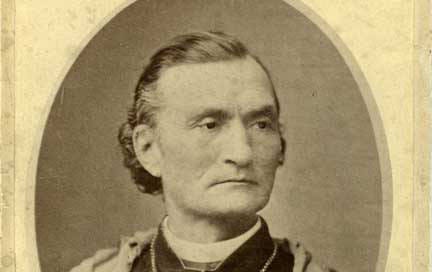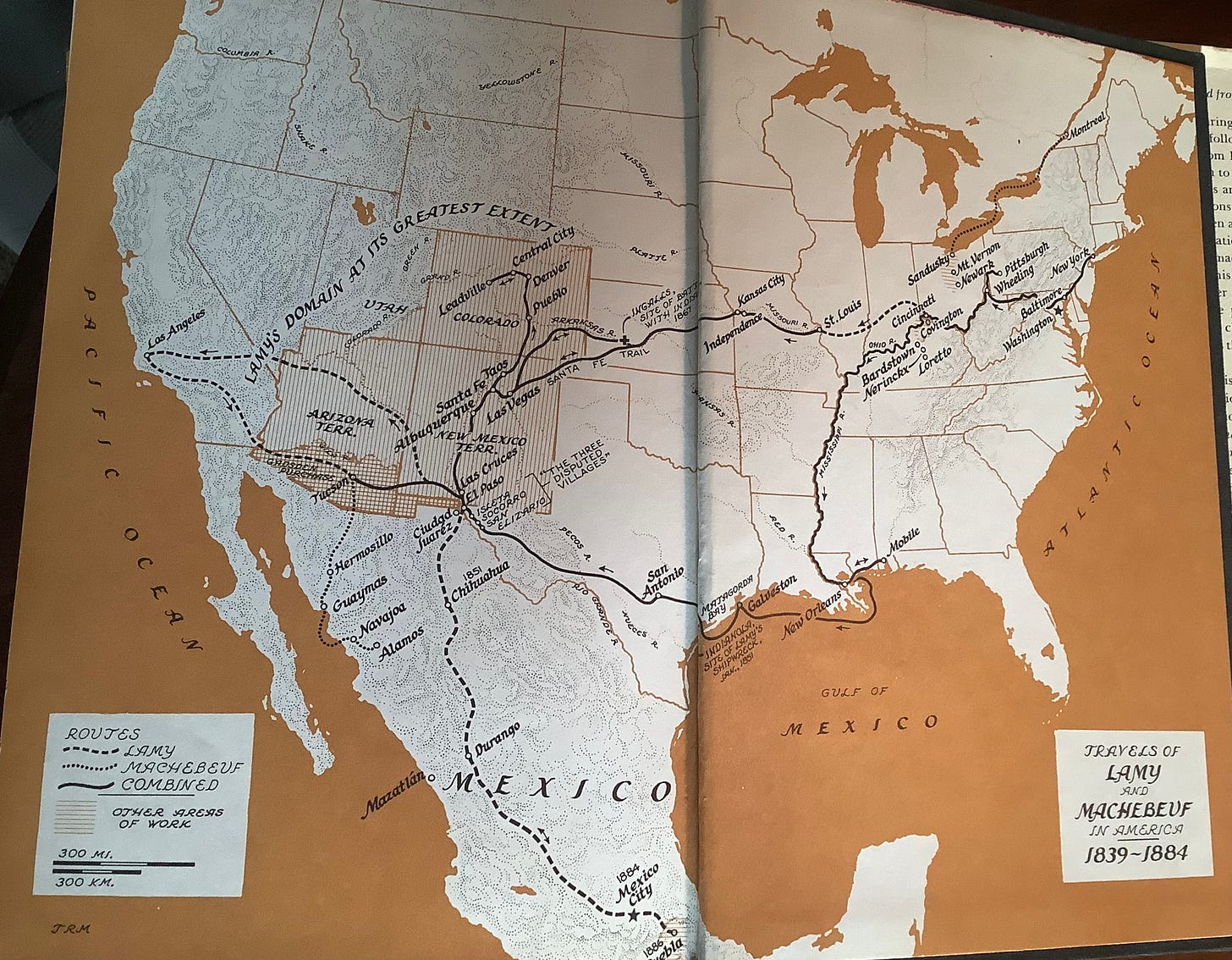A friend recently passed along a biography of the French-born Jean-Baptiste Lamy (1814-1888): Pulitzer Prize (for History) winning author Paul Horgan’s Lamy of Santa Fe.
Horgan chronicles the life of New Mexico’s first resident bishop (named archbishop in 1875) and the most influential Catholic in the region during the 1800s. Lamy’s accomplishments included endowing of hospitals, orphanages, English-language schools and colleges, forming the foundation of modern-day Santa Fe. He also established the first parish in Colorado in 1858.
Lamy’s life story was also the subject of Willa Cather’s novel Death Comes for the Archbishop.
Both Horgan’s biography and Cather’s novel bring to life a pivotal period in the American Southwest.
As I work my way through Horgan’s 500-page masterpiece Lamy’s energy and work ethic is front and center. Following his arrival in America in 1839 at age 25 (after 42 days crossing the Atlantic with his colleague Fr. Marchebeuf ) he was active in his ministry for 44 years, beginning in Ohio before moving westward.
His accomplishments in that period of time are even more impressive when one considers the amount of “down-time” he had to endure traveling by horseback and on foot, only later by rail. One needs only to study the map below to appreciate his travels and the geographic breadth of his responsibilities.
Lamy was a pioneer hero, not only of the Church, but of the raw American West, and the region enjoys the fruits of his perseverance to this day. A brief biographical sketch can be found at New Mexico History but Horgan’s monumental tome is a must-read to fully appreciate the remarkable and heroic Jean-Baptiste Lamy.






Makes you wonder how a bishop today can complain about his work load when you see a map like this.